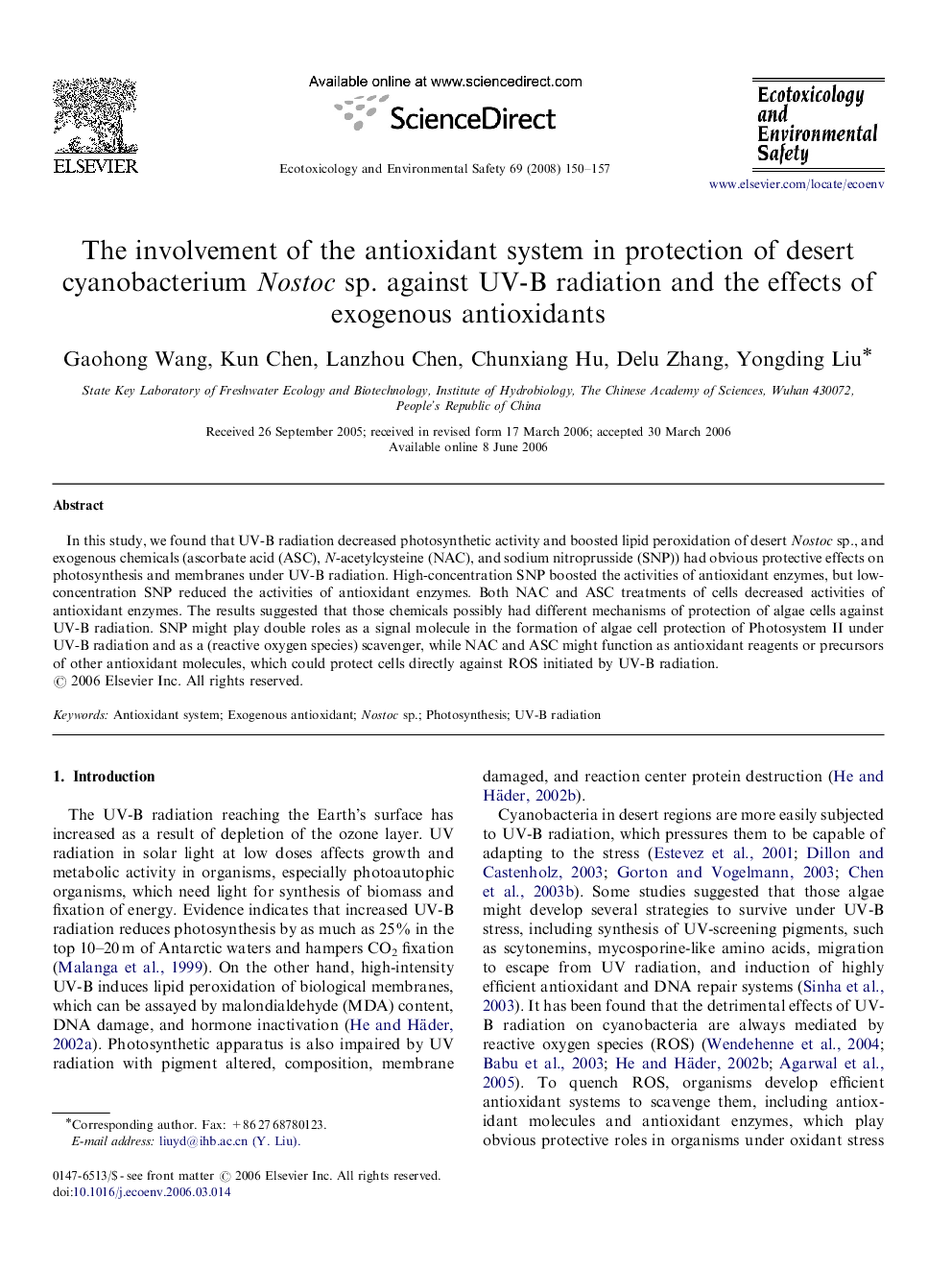| Article ID | Journal | Published Year | Pages | File Type |
|---|---|---|---|---|
| 4422275 | Ecotoxicology and Environmental Safety | 2008 | 8 Pages |
Abstract
In this study, we found that UV-B radiation decreased photosynthetic activity and boosted lipid peroxidation of desert Nostoc sp., and exogenous chemicals (ascorbate acid (ASC), N-acetylcysteine (NAC), and sodium nitroprusside (SNP)) had obvious protective effects on photosynthesis and membranes under UV-B radiation. High-concentration SNP boosted the activities of antioxidant enzymes, but low-concentration SNP reduced the activities of antioxidant enzymes. Both NAC and ASC treatments of cells decreased activities of antioxidant enzymes. The results suggested that those chemicals possibly had different mechanisms of protection of algae cells against UV-B radiation. SNP might play double roles as a signal molecule in the formation of algae cell protection of Photosystem II under UV-B radiation and as a (reactive oxygen species) scavenger, while NAC and ASC might function as antioxidant reagents or precursors of other antioxidant molecules, which could protect cells directly against ROS initiated by UV-B radiation.
Related Topics
Life Sciences
Environmental Science
Environmental Chemistry
Authors
Gaohong Wang, Kun Chen, Lanzhou Chen, Chunxiang Hu, Delu Zhang, Yongding Liu,
